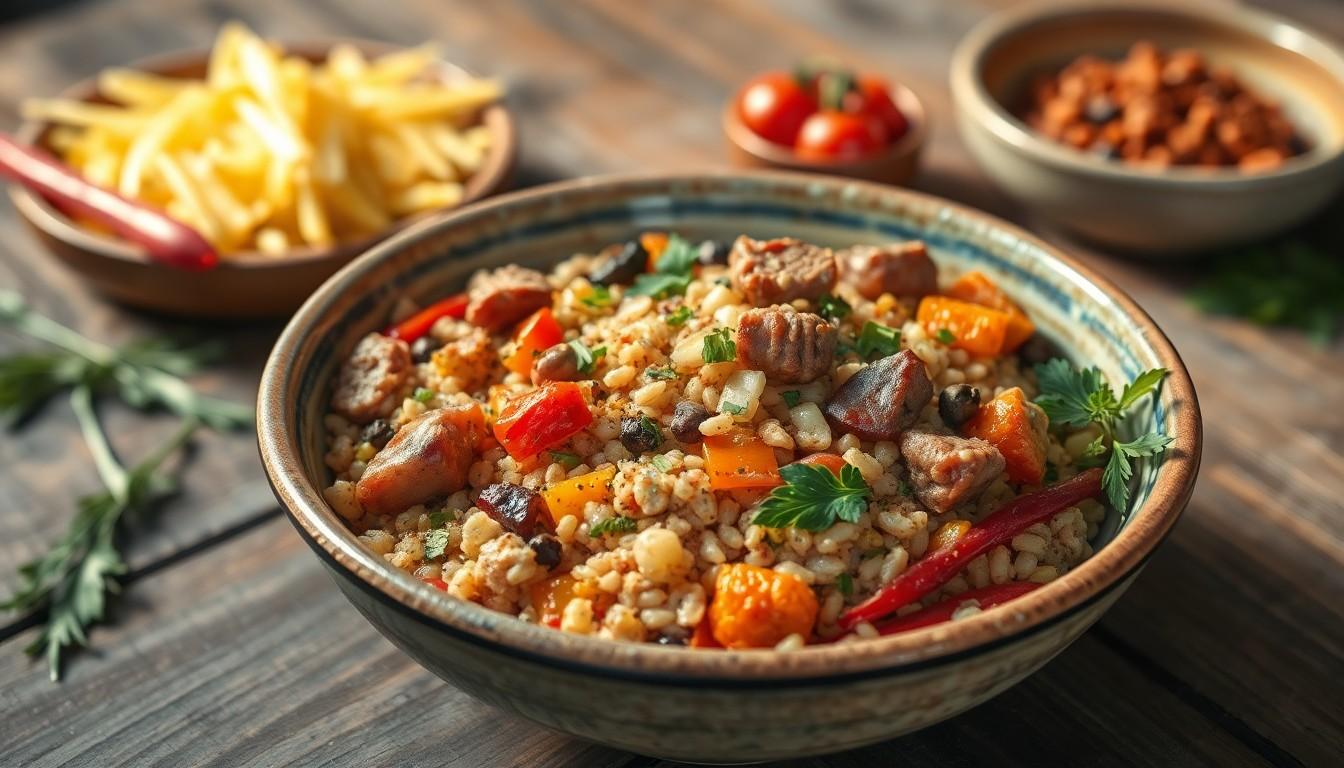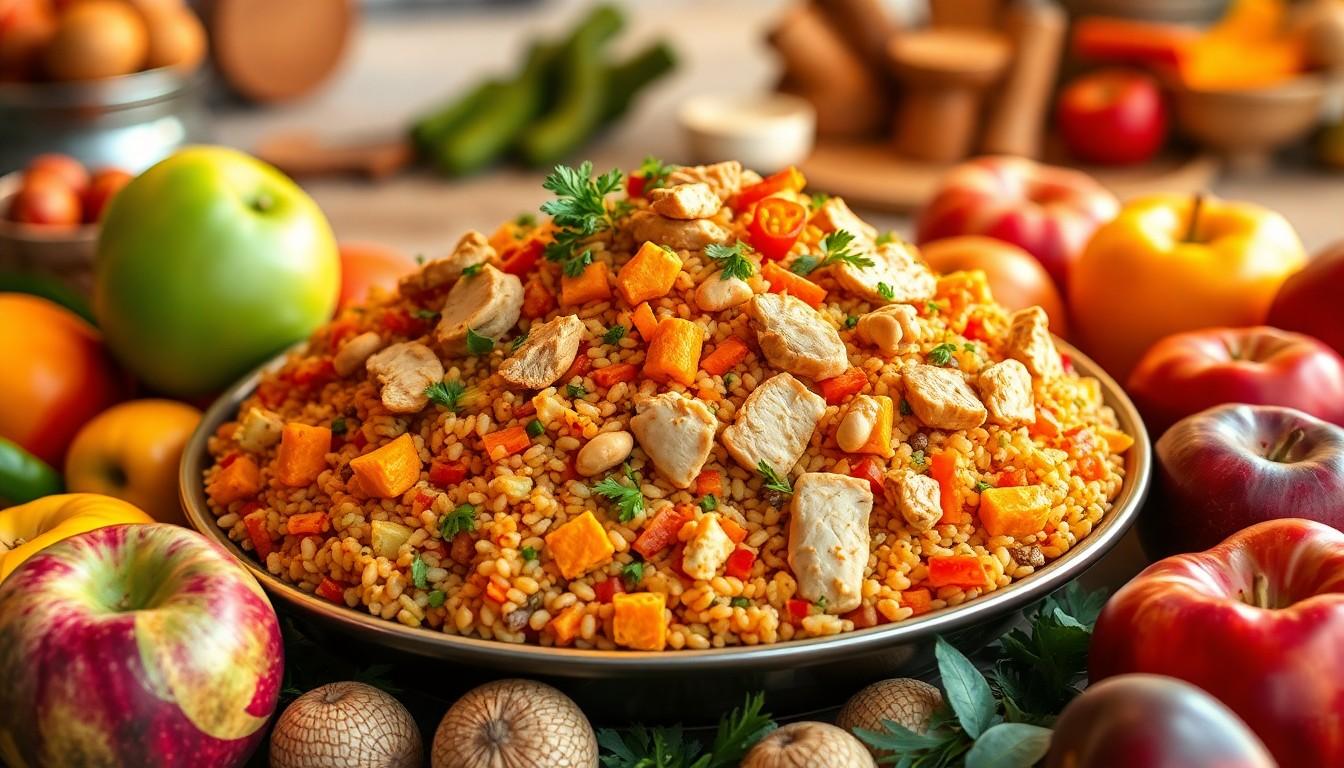Rosgodil, the culinary gem that’s been hiding in plain sight, is about to take your taste buds on a wild ride. This delightful dish, often overshadowed by its more popular counterparts, is a treat that deserves a spotlight. Imagine a fusion of flavors that dances on your palate while whispering sweet nothings to your stomach.
But what exactly is rosgodil? It’s not just food; it’s an experience that combines tradition with a dash of innovation. With its rich textures and unique ingredients, rosgodil is the kind of dish that makes you wonder how you ever lived without it. So buckle up as we dive into the delicious world of rosgodil, where every bite tells a story and every forkful is a reason to celebrate.
Overview of Rosgodil
Rosgodil stands out as a unique dish that embodies a blend of cultural influences and culinary creativity. It showcases a combination of ingredients that varies by region, often incorporating local flavors and traditions. Chefs craft rosgodil with a focus on rich textures, ensuring each component adds depth to the overall experience.
Commonly found in festive celebrations, rosgodil garners attention for its impressive presentation. Diners often encounter an array of colors and aromas that entice the senses before the first bite. Traditional ingredients like grains, meats, and spices come together to create a harmonious dish that resonates with many palates.
Inventive variations exist, allowing individuals to customize rosgodil to their preferences. Different recipes highlight seasonal produce, which infuses freshness into the dish. Enthusiasts frequently experiment with spices, giving rosgodil an adventurous twist that appeals to a broad audience.
This dish not only serves as a meal but also fosters community and connection. Sharing rosgodil during gatherings enhances the collective enjoyment of food, reinforcing bonds among friends and family. Its ability to evoke emotions and memories makes it a cherished part of many culinary traditions.
Ultimately, rosgodil encourages exploration and appreciation of diverse flavors. Its robust profile invites food lovers to experience the joy of combining familiar tastes with innovative approaches. Embracing tradition while allowing room for creativity elevates rosgodil as a modern classic that continues to captivate diners.
Ingredients Used in Rosgodil

Rosgodil combines diverse ingredients that emphasize its unique flavor and texture. Understanding these components enhances the appreciation of this culinary delight.
Primary Ingredients
Grains form the base of rosgodil, providing a hearty texture. Rice, wheat, or barley often serve as the main element, depending on regional variations. Meats such as chicken, lamb, or beef lend richness to the dish. Fresh vegetables, including carrots, onions, and bell peppers, contribute vibrant colors and valuable nutrients. Spices like cumin, coriander, and paprika add depth, creating a flavor profile that captivates those who try it.
Optional Ingredients
Chefs incorporate optional ingredients to personalize rosgodil. Seasonal fruits such as raisins or pomegranates introduce a sweet contrast, enhancing the overall experience. Nuts, like almonds or walnuts, add crunch and nutritional benefits. Herbs, including parsley or cilantro, offer a fresh note that balances the rich flavors. Creative cooks might also use various sauces or chutneys for an extra layer of taste, catering to individual preferences and regional traditions.
Preparation Method
Preparing rosgodil involves several specific techniques that enhance its flavor and texture. This dish can be made through methods such as boiling, steaming, or slow-cooking. Boiling grains like rice or barley creates a fluffy base, while slow-cooking meats allows for deeper flavor infusion. Steaming vegetables retains their nutrients and vibrant colors, adding freshness to the dish. Each technique contributes to the dish’s rich profile, ensuring satisfying textures in every bite.
Cooking Techniques
Cooking rosgodil incorporates diverse techniques tailored to regional preferences. Chefs often begin by sautéing onions and garlic for aromatic bases. Steaming or simmering grains then follows, providing a solid foundation. Typically, meats are added next, allowing their juices to mingle. Cooking spices at this stage enhances the overall flavor. Each technique, from sautéing to simmering, plays a critical role in achieving a well-rounded dish that resonates with diners.
Serving Suggestions
Serving rosgodil invites creativity and presentation. It pairs well with a variety of sides, including fresh salads or yogurt-based dips. Traditionally, it’s displayed on large platters, showcasing colorful ingredients. Garnishing with chopped herbs or toasted nuts elevates the dish visually. Sharing rosgodil during gatherings fosters community, encouraging diners to share stories while enjoying this vibrant meal. Consider offering seasonal fruits on the side for added texture and sweetness, enhancing the overall experience.
Nutritional Value
Rosgodil offers a rich tapestry of flavors while providing significant nutritional benefits. The dish often combines a variety of ingredients, contributing to a well-rounded nutrient profile.
Health Benefits
Rich in vitamins and minerals, rosgodil supports overall health. Grains like rice and barley provide essential carbohydrates for energy, while meats contribute protein for muscle repair and growth. Fresh vegetables add fiber, aiding digestion and promoting a healthy gut. Spices such as cumin and coriander boast anti-inflammatory properties, enhancing well-being. Seasonal fruits and nuts, when included, offer additional vitamins, healthy fats, and antioxidants, contributing to a balanced diet.
Dietary Considerations
Rosgodil accommodates diverse dietary needs with relative ease. For individuals seeking gluten-free options, substituting grains with quinoa or rice ensures compatibility. Those following vegetarian or vegan diets can easily omit meats, instead emphasizing vegetables, legumes, and nuts to maintain richness. It’s advisable to monitor added salt and fat levels, tailoring them based on individual dietary requirements. Additionally, customization allows everyone to enjoy rosgodil in a way that aligns with their health goals.
Conclusion
Rosgodil is a vibrant dish that goes beyond mere sustenance. It’s a celebration of flavors and textures that brings people together. With its rich heritage and innovative variations, rosgodil invites culinary exploration and creativity.
Whether enjoyed at festive gatherings or as a comforting meal at home, it fosters connection and joy. The dish not only satisfies hunger but also enriches cultural experiences, making it a beloved choice for many. Embracing rosgodil means indulging in a delightful journey through diverse tastes and traditions that continue to evolve.




